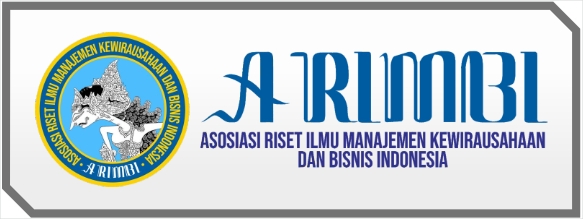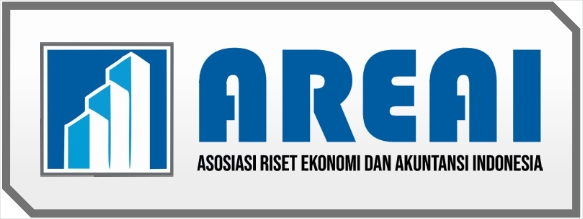Levers of Control as an Integrated Control Systems: A Case of Cement Manufacturing Company
DOI:
https://doi.org/10.55606/iceb.v1i2.228Keywords:
levers of control; management control systemsAbstract
The aim of the research is to analyze implementation of levers of control in Semen Indonesia Group (SIG) which are belief system, boundary system, diagnostic control system and interactive control system. The methodology employed is qualitative descriptive with case study approach. In belief system, the company communicates its core values with vision, mission statement, and corporate core values (AKHLAK). The company reduces risk by regulating employee’s behavior in its agreement with employee in performance contract, code of conduct and by implementing integrated risk management system as part of its boundary system. For the interactive control system, the company monitors interactively certain indicators in the Kriteria Penilaian Kinerja Unggul (KPKU) or Criteria for Superior Performance Assessment. In the diagnostic control system, the company evaluate an implementation of its strategy by monitoring indicators not only in the Kriteria Penilaian Kinerja Unggul (KPKU) or Criteria for Superior Performance Assessment and but also evaluating variances in its management reports.
References
Anthony, R. N. (1965). Planning and control systems: a framework for analysis (Graduate School of Business Administration, Harvard University ed.). Boston: Graduate School of Business Administration, Harvard University
Bisbe, J., and Otley, D. 2004. The Effects of the Interactive Use of Management Control Systems on Product Innovation. Accounting, Organizations and Society, Vol. 29, No. 6, pp. 709-737.
Hatane, Saarce & Gabrielle, L & Angelina, S. (2019). The Levers of Management Control System in Organizational Life Cycle. KnE Social Sciences. 3. 188. 10.18502/kss.v3i11.4007.
Henri, JF.. 2006. Management Control Systems and Strategy: A Resource -based Perspective. Accounting, Organizations and Society. Vol. 31, No. 4, pp. 529-
Langfield-Smith, K. 1997. Management Control Systems and Strategy: A Critical Review. Accounting, Organizations and Society, Vol. 22, No. 2, pp. 207-232.
Lekatompessy, Jantje E. 2012. Peran Sistem Pengendalian Manajemen Dalam Meningkatkan Kinerja Perusahaan: Analisis Kontinjensi Dan Resource-Based View. Disertasi Doktor Ilmu Ekonomi, Universitas Diponegoro Semarang.
Martyn, P, Sweeny, B & Curtis, E. (2016). Strategy and control: 25 years of empirical use of Simons’ Levers of Control framework, Journal of Accounting & Organisational Change, Vol. 12 No. 3, 2016 pp. 281-324
Mundy, J. (2010). Creating dynamic tensions through a balanced use of management control systems. Accounting, Organisations, and Society, 35: 499-523
Otley, D. 1980. The Contingency Theory of Management Accounting: Achievements and Prognosis. Accounting, Organizations and Society, Vol 5, No. 3, pp. 413-428.
Ratmono, D. 2019. The Role of Levers of Control to Manage Strategic Uncertainty and to Enhance Innovation and Performance. International Journal of Innovation, Creativity and Change. Volume 14, Issue 9, 2020
Semen Indonesia Group. 2021. Annual Report 2021. PT. Semen Indonesia Tbk (Persero). Jakarta Indonesia.
Simons, R. (1987). Accounting control system and business strategy: an empirical analysis. Accounting, Organisations, and Society, 12: 357-374.
Simons, R. 1995. Levers of Control: How Managers Use Innovative Control Systems to Drive Strategy Renewal. Boston. Harvard Business School Press.
Simons, R. 2000. Performance Measurement and Control Systems for Implementing Strategy. Upper Saddle River, NJ: Prentice Hall.
Tekavcic, M., Peljhan, D. and Sevic, Z. (2008), “Levers of control: analysis of management control systems in a Slovenian company”, The Journal of Applied Business Research, Vol. 24 No. 4,pp. 97-112.
Toumela, T. 2005. The Interplay of Different Levels of Control: A Case Study of Introducing a New Performance Measurement System. Management Accounting Research, Vol. 16, pp. 293-320.
Widener, Sally, K. 2007. An Empirical Analysis of the Levers of Control Framework. Accounting, Organizations and Society, Vol. 32, No. 6, pp. 757-788
Widyaningdyah, A. U., & Aryani, Y. A. (2016). Perceived Environmental Uncertainty, Performance Measurement Systems, and Competitive Advantage. Review of Integrative Business and Economics Research, Vol. 5, no. 3, pp.117-134
















